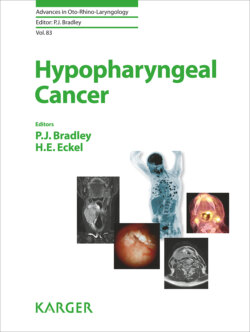Читать книгу Hypopharyngeal Cancer - Группа авторов - Страница 19
На сайте Литреса книга снята с продажи.
Alcohol
ОглавлениеAlcohol used independently increases the risk of UADT cancer with an estimated 1–4% of cases attributed to alcohol alone and twofold increase in odds of UADT cancer for drinkers who are never-users of tobacco [57]. The primary types of alcohol consumption are beer, wine and spirits – in ascending order of alcohol content. One of the mechanisms of ethanol is that it facilitates the uptake of carcinogens from for example, tobacco smoke or swallowed tobacco, thus increasing the risk of tobacco-induced cancers. The average figure globally is 6.2 L of pure alcohol per person per year based on commercial sales figures. But as less than half the world population (38.3 per cent) actually drinks alcohol, this means that those who do drink consume on average 17 L of pure alcohol annually [58]. The highest intake of alcohol (12.2 L pure alcohol/year per capita) is in the Eastern European region and the lowest in the Eastern Mediterranean region (0.7 L pure alcohol/year per capita). In many countries, including Eastern European countries, there is a high intake of homemade fruit-derived spirits that contain acetaldehyde, which is a known carcinogen, and therefore these countries are known to have a high incidence of hypopharyngeal cancer [59]. It has been suggested that the intake of alcohol increases with industrialisation and urbanisation of a country [58]. The effects of intensity and duration of alcohol intake has been studied; it is suggested that at relatively high intakes (> 60 g/day ≙ 13 g/L ≙ one drink), the risk of head and neck cancer is threefold that of non-drinkers, but that especially for women, the risk starts increasing already at more moderate intakes. The cessation of alcohol intake requires a period of >20 years for the normalisation of the risk of UADT as in never-drinkers [50].
The consumption pattern and alcohol types vary in different countries and regions and an accurate intake and the type of drink appear to have an increased risk of hypopharyngeal cancer when compared to cancer at the head and neck sites [41]. The combined effects of alcohol and tobacco use have a great multiplicative impact, thereby increasing the risk of cancer [37]. Among individuals who smoke 2 or more packs of cigarettes and also drink more than 4 alcoholic drinks per day, the risk of UADT cancer increases > 35 fold [60].
